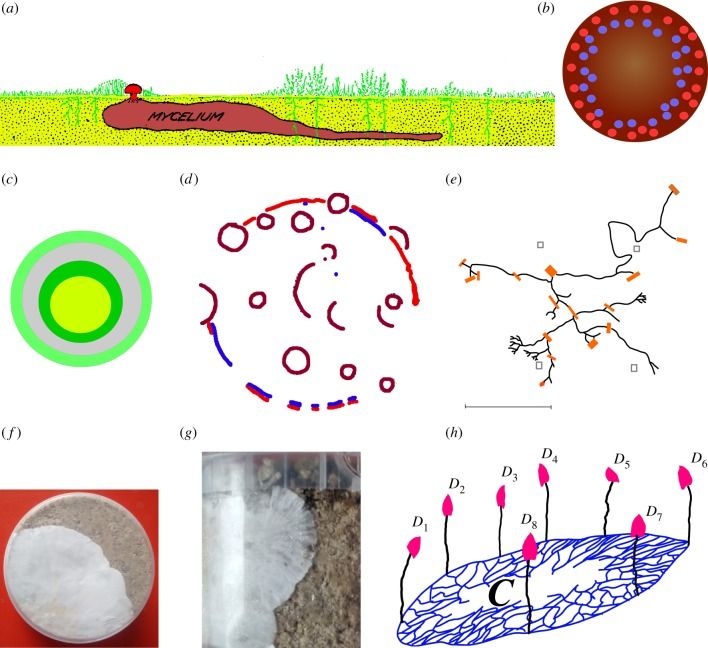Circa 2018
We propose that fungi Basidiomycetes can be used as computing devices: information is represented by spikes of electrical activity, a computation is implemented in a mycelium network and an interface is realized via fruit bodies. In a series of scoping experiments, we demonstrate that electrical activity recorded on fruits might act as a reliable indicator of the fungi’s response to thermal and chemical stimulation. A stimulation of a fruit is reflected in changes of electrical activity of other fruits of a cluster, i.e. there is distant information transfer between fungal fruit bodies. In an automaton model of a fungal computer, we show how to implement computation with fungi and demonstrate that a structure of logical functions computed is determined by mycelium geometry.
The fungi are the largest, widely distributed and oldest group of living organisms [1]. The smallest fungi are microscopic single cells. The largest mycelium belongs to Armillaria bulbosa, which occupies 15 hectares and weights 10 tons [2], and the largest fruit body belongs to Fomitiporia ellipsoidea, which at 20 years old is 11 m long, 80 cm wide, 5 cm thick and has an estimated weight of nearly half-a-ton [3]. During the last decade, we produced nearly 40 prototypes of sensing and computing devices from the slime mould Physarum polycephalum [4], including the shortest path finders, computational geometry processors, hybrid electronic devices, see the compilation of the latest results in [5].









Comments are closed.